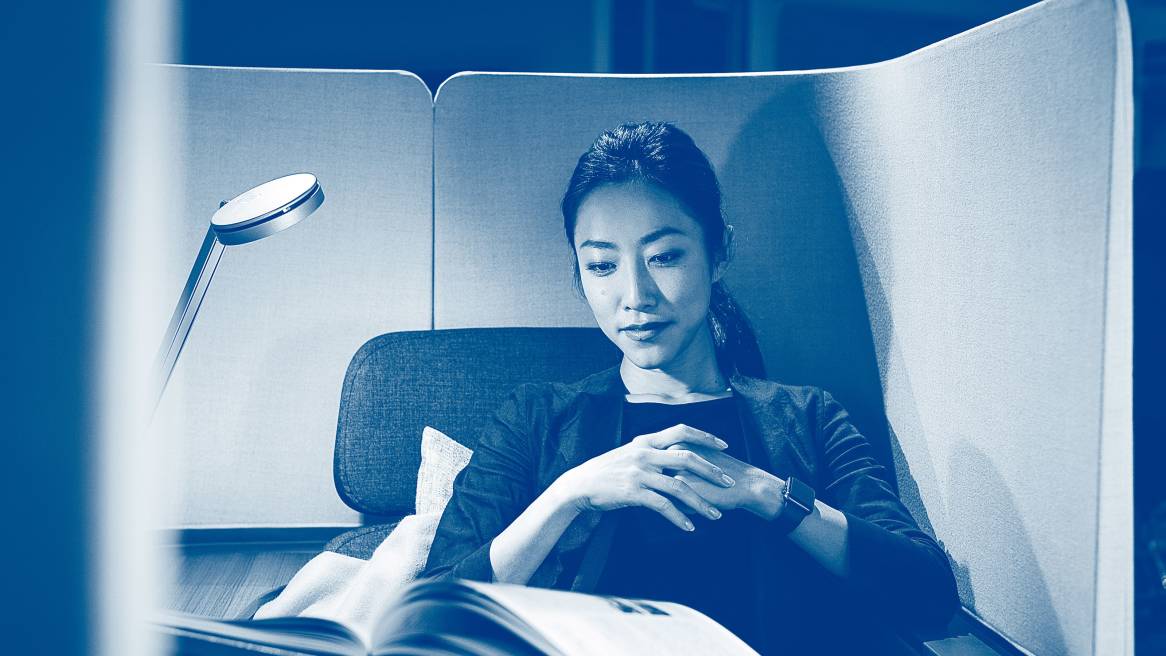Finding Focus
Research proves that visual privacy in the open plan helps people stay focused
A new Steelcase study, conducted in consultation with the University of Wisconsin – Madison found that providing cocoons of visual privacy was enough to help people focus within noisy open offices.
News outlets worldwide pan the open office, claiming that it’s stressing us out with too much distraction and too little privacy. The data tell a slightly different story — providing more areas of visual privacy can mitigate some of the distractions that frustrate people at work. When organizations balance the needs of individuals with the needs of teams, the open plan can be an environment where everyone thrives.
The research study
To take a deeper look into the open-plan’s effect on work performance, Steelcase WorkSpace Futures Manager, Caroline Kelly led a study measuring sustained attention — a core component of any work process, signaling engagement and focus.

Kelly consulted with the Center for Healthy Minds (CHM) at the University of Wisconsin–Madison — a global leader in scientific research on the brain and emotions. Dr. Richard Davidson, CHM’s founder and director as well as author of “The Emotional Life of the Brain” was intrigued with studying the relationship between the physical environment and wellbeing. Elena Patsenko, a research scientist at the center, was tasked with helping to conceptualize the study with Kelly and acted as an expert guide throughout the process.
Almost 70 study participants completed the Sustained Attention Response Task (SART), a test widely used to measure how well people can maintain their focus amidst distractions. By completing a “Go/No-Go” task—which asks participants to press or not press a button, based on a specific cue — researchers can evaluate the participants’ ability to focus based on their response times, error rate and time between errors.
When organizations balance the needs of individuals with the needs of the teams, the open plan can be an environment where everyone thrives.
Participants were studied in two open-plan settings:
- A shared bench with no boundaries
- A Brody WorkLounge (an individual work environment with a wrap-around screen that provides shielding)
Each participant was tested at both the bench and the Brody, limiting variables that could affect results. To simulate an authentic office setting, two participants sat diagonally across from each other at the bench and typical open office noise played in the background.

The results
The results showed that providing visual privacy in a setting like Brody helps people concentrate significantly better than sitting in completely open areas.
While seated in Brody, participants had significantly slower response times compared to those seated at the bench — which is actually a good thing. Slower response times indicate concentration, focus and engagement. They also made fewer errors and had less variation between their response times, indicating a consistent state of focus.
While it may sound counterintuitive that slower response times are better, Patsenko explains why. “Increased reaction times are usually indicative of the participants slipping into automatic or mindless responding, without taking time to process or identify the stimulus.” She also notes that increased reaction times are associated with higher error rates, mind wandering and distraction.
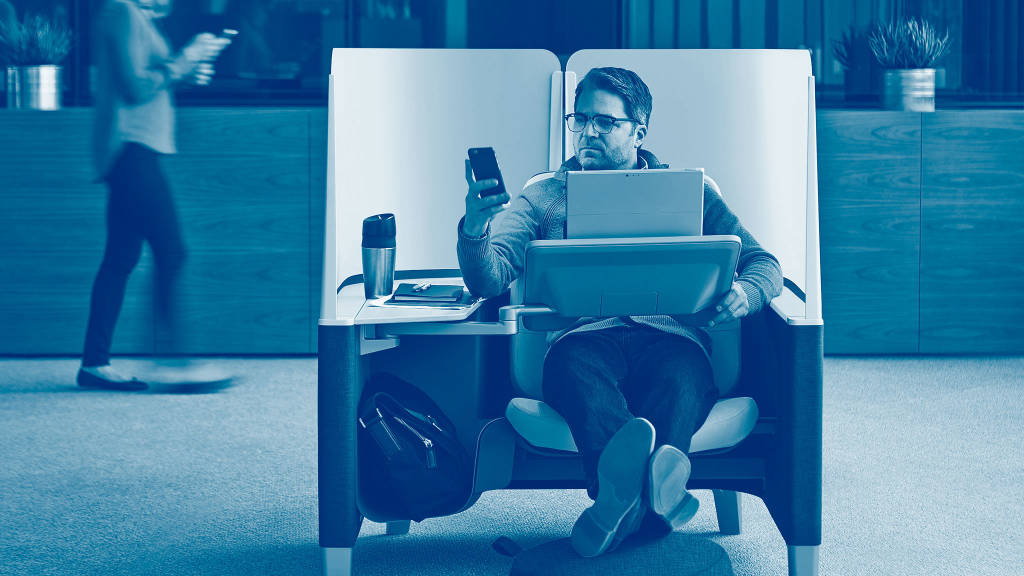
Providing visual privacy in the open plan helps people concentrate significantly better than sitting in completely open areas.
Brains get tired
People say they struggle to focus in today’s open-plan workplace and neuroscience explains why. Studies show the human prefrontal cortex, where most knowledge work takes place, is energy-hungry and very easily distracted. Humans are able to give controlled, full attention to just one thing at a time. Without options for privacy in the open plan, workers are caught in a crossfire of distractions, adding extra cognitive load on top of the work they are doing. As the ability to focus wanes and cognitive load increases, automatic decision-making rises and quality thinking suffers.
In addition, we’re a communal species and our human nature enforces a desire to be accepted and valued by our tribe, which amplifies distractions. To achieve social acceptance from our peers, we continuously monitor our behavior and appearance in front of others to make sure it’s in line with cultural norms and values. Controlling one’s behavior all day is distracting and takes energy, leaving workers feeling depleted after being on display during a stressful day of work.
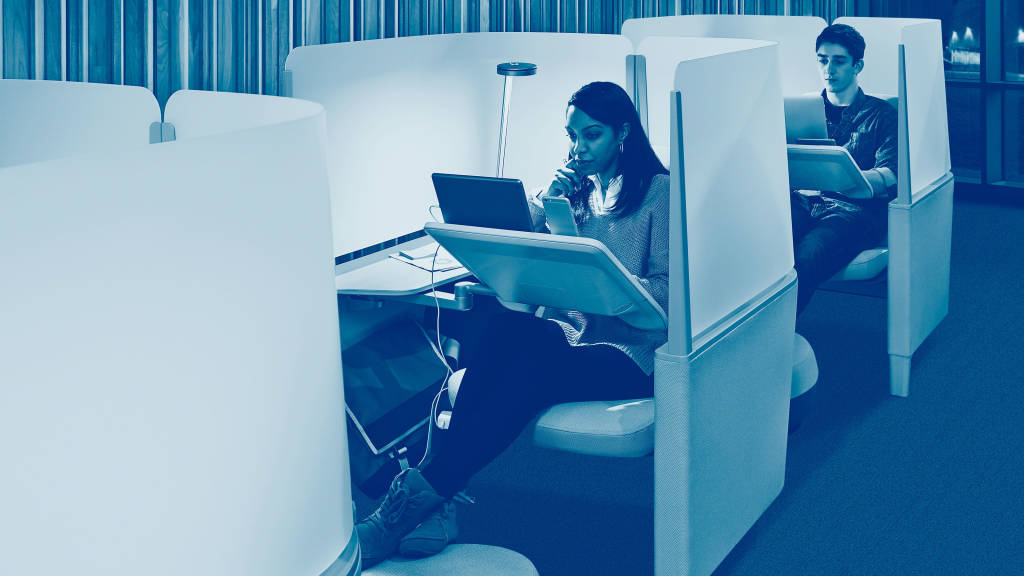
We don’t need to say goodbye to the open plan or benching. We just need to equip it differently.
Caroline KellySteelcase WorkSpace Futures Manager
Designing the Open Plan
When people complain about the open plan, they often talk about noise and distracting conversations. Some assume that acoustical privacy is the only solution, but, the results of the study show workers can achieve focus in the open plan without it. When in the Brody, participants were able to improve their ability to concentrate and stay engaged when given more visual and territorial privacy. By designing the open plan with a range of privacy options, workers can find the space that suits them and the task at hand best.
Does this mean benches should go away in the office? Not so fast. Open areas provide a different set of benefits: broad vistas, high ceilings and long views provide us with different physical perspectives, which can prime our brains to make new connections and see things in new ways. The study also found that participants were significantly more creative while seated at the bench. Using the Remote Associates Test, participants were given one minute to come up with an additional word that shared something in common with three others on a list. When at the bench, people generated more correct answers, indicating they could connect the words quicker in more abstract ways.
Research suggests that having decreased focus can actually improve our ability to be more divergent and creative in problem-solving,” explains Kelly. “Sitting at a bench with your teammates may be just the right place to tackle a problem together. Other times, when we need to focus, spaces that offer shielding or visual privacy are best.”
The Study Environment:
Two Open-Plan Settings
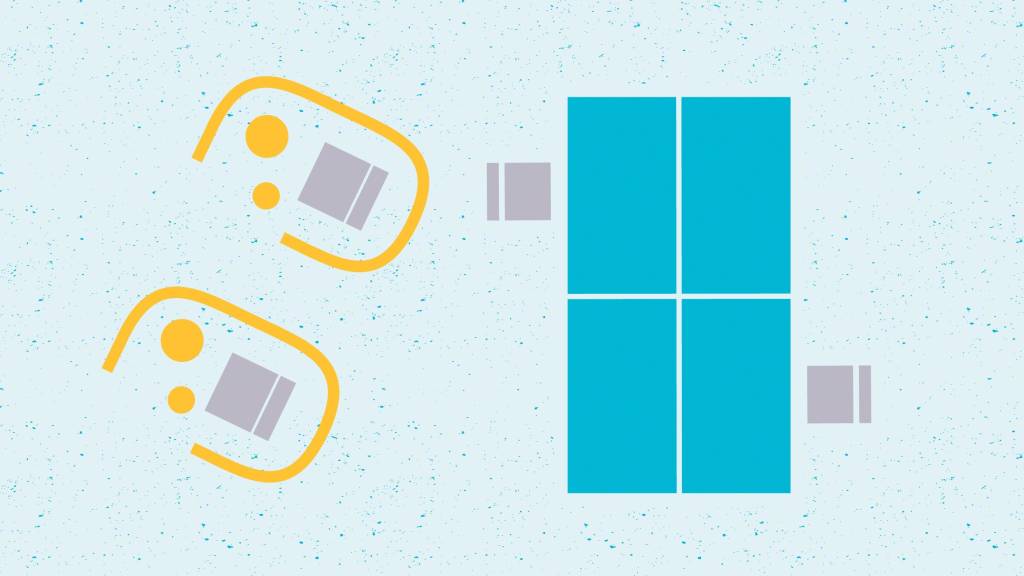
Focus Test
When completing the SART, participants made significantly more mistakes responding to “No-Go” prompts at the bench setting than in the Brody setting, suggesting participants working in Brody could sustain attention with greater ease.
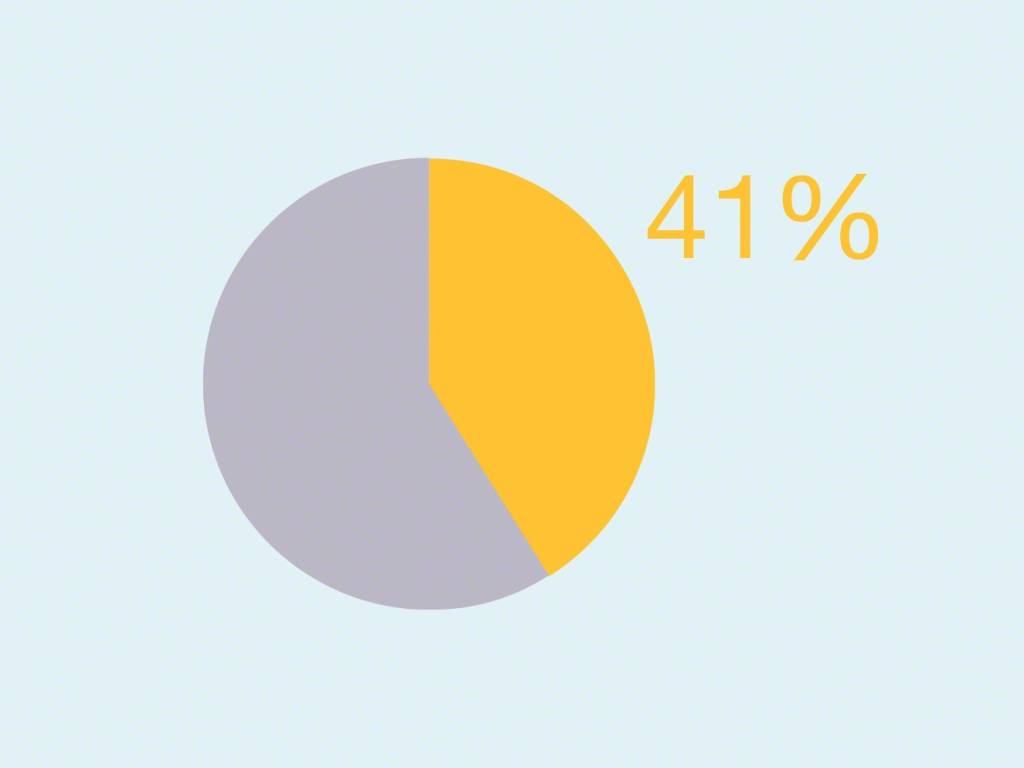
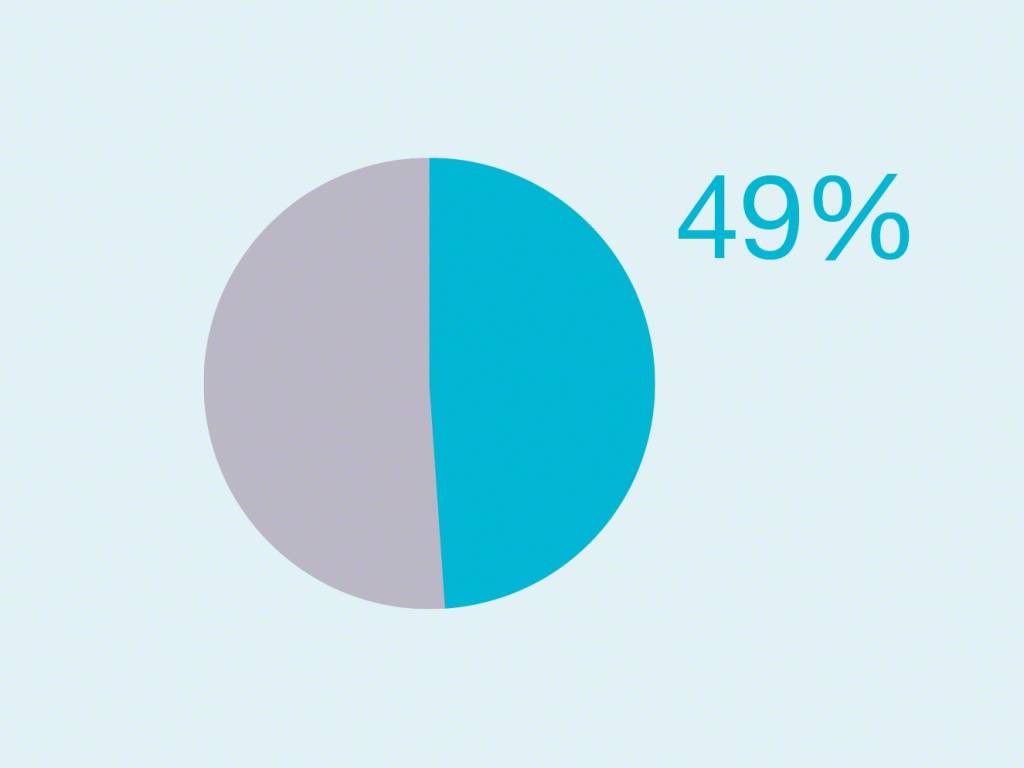
Creative Test
Participants were additionally tested on their creative aptitude in a Remote Associates Test. The study found that participants experienced a statistically significant increase in correct respon-ses when working at the bench.

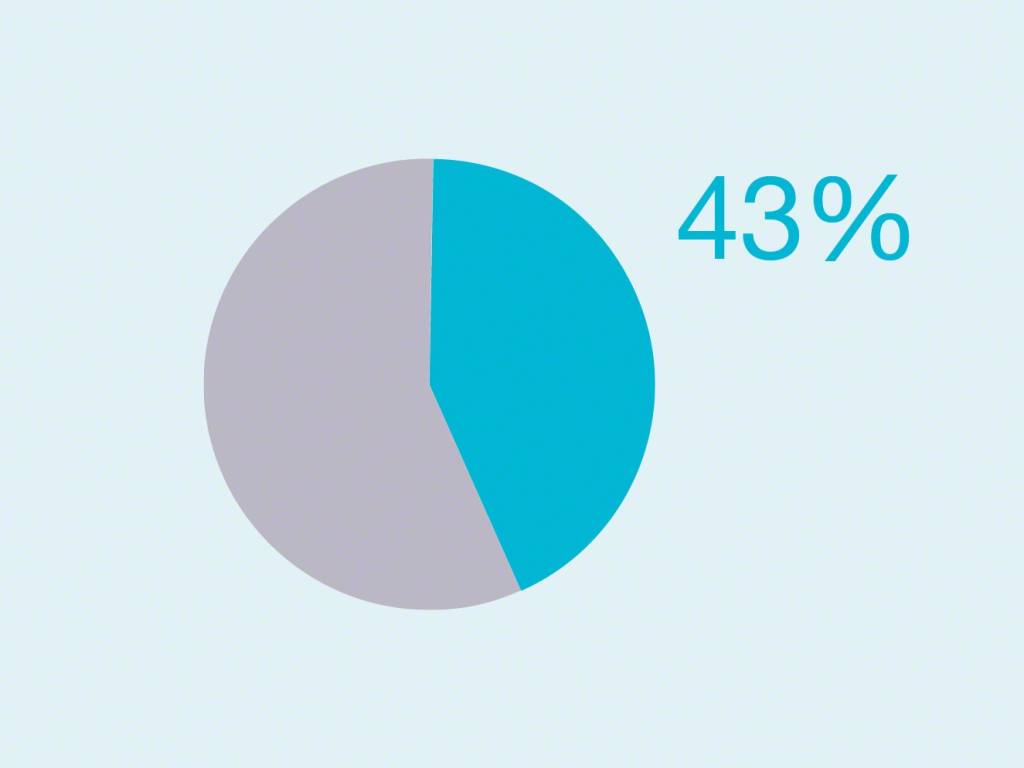
Support the me within we
The solution is to offer people a diverse range of spaces, with varying levels of privacy from which to choose the best place for the type of work they need to do. This means designing spaces that balance the need for “me” within “we” — supporting individual focused work as well as team-based collaborative work. It seems simple, yet the design challenge is often about getting the distance right between areas for focus and areas for interaction: too close and the group can distract the individual, but too far away and people don’t seek out the areas they need for concentration.
Every individual has basic needs for privacy and focus. Time alone is as crucial to the creative process as time with others. Workers need spaces where they can decompress and recharge, dive deep into work before resurfacing and collaborating with the team again.
“We don’t need to say goodbye to the open plan or benching,” Kelly explains. “We just need to equip it differently. Pockets of privacy created through shared spaces and furniture like Brody can transform existing floorplans from places of distraction to comfortable havens for employees to collaborate and focus in harmony.”

